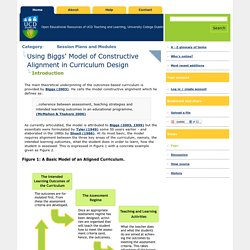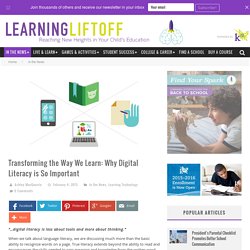

Select teaching technology with SECTIONS. As the demand for eLearning grows, we see more teachers turning to technologies to support or deliver their teaching.

Good guidance in the selection of the appropriate technologies is often missing. All too often, we see teachers falling for the glossy technologies and spending time and money pursuing them at the expense of the learning of their students. On the other hand, whilst learning is the primary goal, other considerations are also important: most obviously, cost in time and money.
In fact, the selection of appropriate teaching and learning technologies is not necessarily straightforward because those decisions have many impacts. Tony Bates and Gary Poole (2003) examined using technology in teaching prior to the iPhone (and other smartphones), iPad, Facebook and Twitter! Students Ease of use Costs Teaching and learning Interactivity Organization Novelty Speed Effective Teaching with Technology in Higher Education: Foundations for Success. How to choose the best Ed-Tech tools for Online Instruction. How many ‘ed-tech’ tools are out there that can enhance online learning?

I’d guess hundreds if not more. It’s almost on a daily basis that I come across a new educational technology tool. Before we move on – what is educational technology or ed-tech??? Ed-tech is a term for technological applications or tools that can be used in an educational environment to enhance instruction.That’s the theoretical definition (though there are others) but .. what ed-tech can do when used effectively is to create meaningful, engaging instruction that motivates learners and supports learning objectives of a lesson or course. In this post I’ll share how educators can use educational technology effectively with the aid of a five-step strategy. For course instructors and designers it’s not so much of should I use one of these applications or tools in my course, but which one?
Why use an Ed Tech tool if the first place? Integration Strategy How do you integrate a new ed-tech tool into a course? Like this: Www.aupress.ca/books/120229/ebook/99Z_Vaughan_et_al_2013-Teaching_in_Blended_Learning_Environments.pdf. Getting the Mix Right Again: An Updated and Theoretical Rationale for Interaction. Online and blended learning - Georgian College. HERDSARHE2014v01p05.pdf. Questions to Consider As You Prepare to Teach Your First Hybrid Course - TeachOnline. A hybrid course is much more than just an online course with a face-to-face class session thrown in for good measure.

It involves asking, “What is the best way for students to interact with course content, construct knowledge, engage in critical thinking and problem solving?” Purposeful decisions are made by the instructor as to what activities are best included in face-to-face class sessions, and which activities would work well in a virtual environment. The term hybrid, or blended course, signifies a new way of thinking about how to harness the power of technology to promote learning and identify the best strategies to help students master important course concepts. However, it is about more than just teaching an existing course in a new format.
Using Biggs' Model of Constructive Alignment in Curriculum Design/Introduction - UCD - CTAG. The main theoretical underpinning of the outcomes-based curriculum is provided by Biggs (2003).

He calls the model constructive alignment which he defines as: …coherence between assessment, teaching strategies and intended learning outcomes in an educational programme. (McMahon & Thakore 2006) As currently articulated, the model is attributed to Biggs (2003, 1999) but the essentials were formulated by Tyler (1949) some 50 years earlier - and elaborated in the 1980s by Shuell (1986). At its most basic, the model requires alignment between the three key areas of the curriculum, namely, the intended learning outcomes, what the student does in order to learn, how the student is assessed. Figure 1: A Basic Model of an Aligned Curriculum. Figure 2: An Example of Constructive Alignment in a Curriculum. Transforming the Way We Learn: Why Digital Literacy is So Important. “…digital literacy is less about tools and more about thinking.”

When we talk about language literacy, we are discussing much more than the basic ability to recognize words on a page. True literacy extends beyond the ability to read and encompasses the skills needed to gain meaning and knowledge from the written word, to think critically, and to write clearly. Likewise, digital literacy is more than simply knowing how to use digital tools. It is the ability to locate, organize, understand, evaluate, and analyze information using digital technology. It’s also about knowing what to share and who to share it with. In other words, it is less about tools and more about thinking. Skills based on using digital tools are important, but they are also short-lived since the tools and platforms available to us change so quickly. In fact, though we refer to modern kids as digital natives, the idea that young people are more inherently digitally literate is false. Update: This series has ended. 1. Link12.pdf.